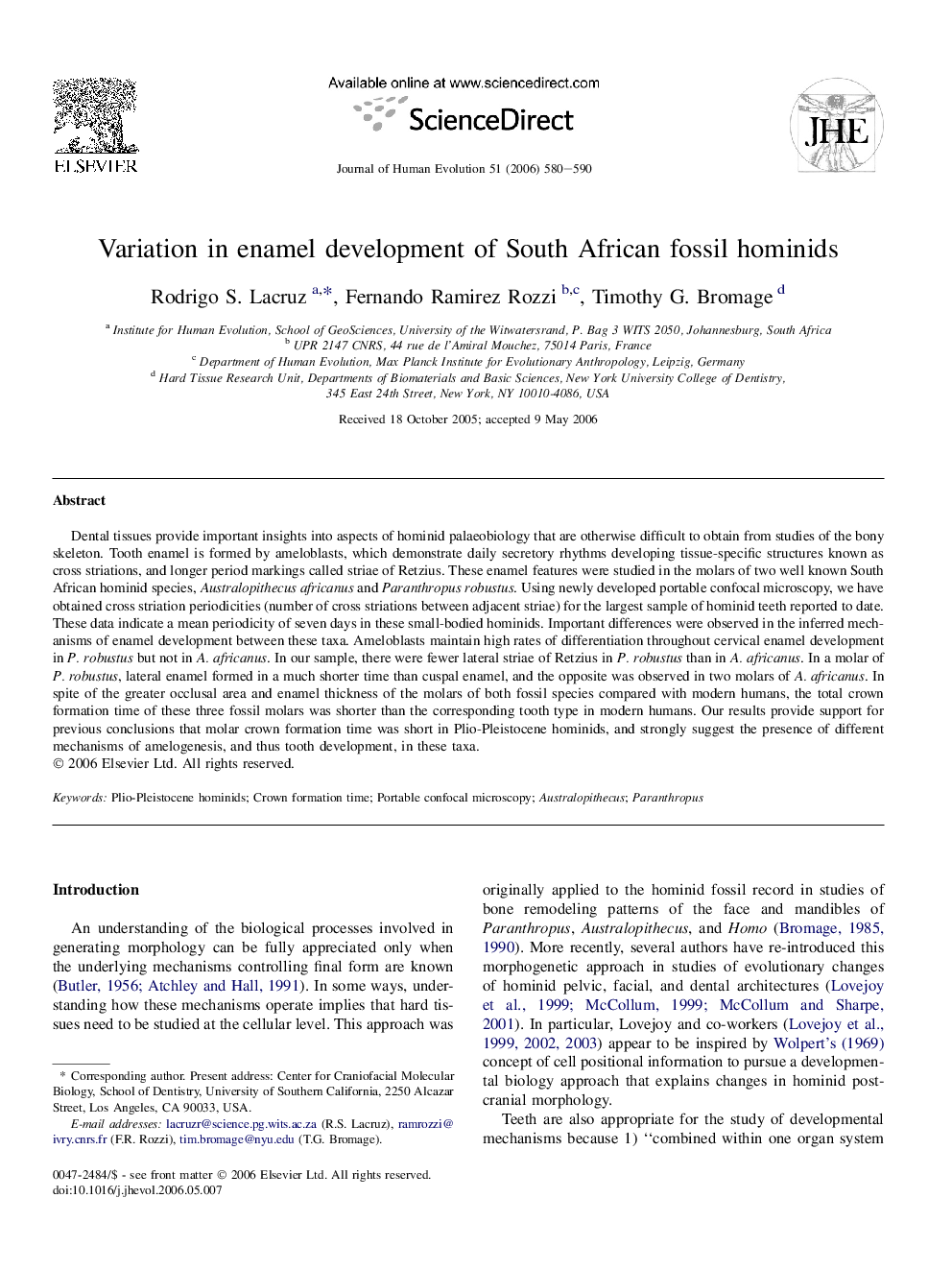| Article ID | Journal | Published Year | Pages | File Type |
|---|---|---|---|---|
| 4557349 | Journal of Human Evolution | 2006 | 11 Pages |
Dental tissues provide important insights into aspects of hominid palaeobiology that are otherwise difficult to obtain from studies of the bony skeleton. Tooth enamel is formed by ameloblasts, which demonstrate daily secretory rhythms developing tissue-specific structures known as cross striations, and longer period markings called striae of Retzius. These enamel features were studied in the molars of two well known South African hominid species, Australopithecus africanus and Paranthropus robustus. Using newly developed portable confocal microscopy, we have obtained cross striation periodicities (number of cross striations between adjacent striae) for the largest sample of hominid teeth reported to date. These data indicate a mean periodicity of seven days in these small-bodied hominids. Important differences were observed in the inferred mechanisms of enamel development between these taxa. Ameloblasts maintain high rates of differentiation throughout cervical enamel development in P. robustus but not in A. africanus. In our sample, there were fewer lateral striae of Retzius in P. robustus than in A. africanus. In a molar of P. robustus, lateral enamel formed in a much shorter time than cuspal enamel, and the opposite was observed in two molars of A. africanus. In spite of the greater occlusal area and enamel thickness of the molars of both fossil species compared with modern humans, the total crown formation time of these three fossil molars was shorter than the corresponding tooth type in modern humans. Our results provide support for previous conclusions that molar crown formation time was short in Plio-Pleistocene hominids, and strongly suggest the presence of different mechanisms of amelogenesis, and thus tooth development, in these taxa.
